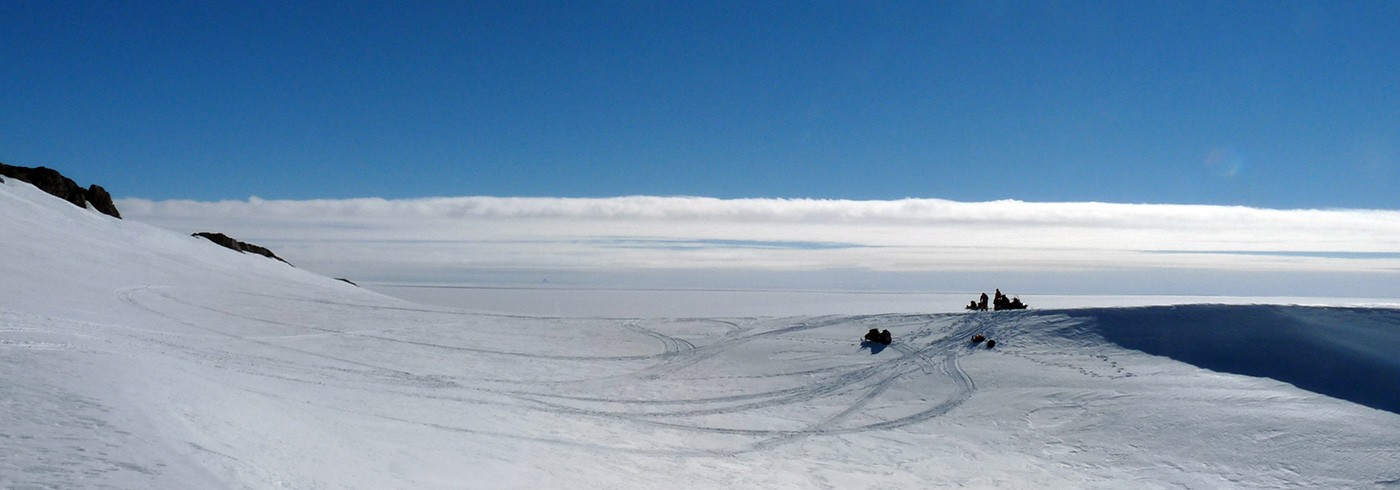
The MAGIC-DML team at a nunatak. Photo: Andreas Bergström
”What do you want for your birthday?”, I ask Sarah, who turns 23.
”That my right foot gets warm,” she replies.
Antarctica is the world’s tallest, coldest, windiest and driest continent We are here in the middle of summer, but the water in the drinking bottle is freezing up quite quickly unless you keep an eye on it. We constantly wear 4–5 layers of clothes, but when the winds come all the way from the South Pole, it’s not enough. When we stumble around between the rocks on the nunataks, the islands of bedrock that rise from the ice sheet, we notice that this is not a place humans are adapted to. We are too unstable in the wind, if a little bit of skin is exposed it will get frostbitten, our fingertips crack, our noses burn if we don’t protect it constantly and water is not available unless you carry around a fair amount of kerosene.
Nevertheless, Dronning Maud Land – the part of Antarctica where we are – is an amazing place to be. The surroundings remind a little of a frozen sea with mountainous islands, 1,500 meters tall, which stretches towards the sky. We move slowly between these mountains with snowmobiles and live in relative comfort in our small ”arks” – the living modules.
But the weather is always in charge. It’s been sunny for four days in a row, and then we can get a lot done, but as soon as the winds and snow-drift starts, we will be forced to get inside and wait for better times. No storm is taken lightly, you can not defy them. If we still have to go outside, we have to bring someone (always be two, bring a GPS, some kind of communication device, and report in, even if we’re only going a hundred yards away).
But when the weather is nice, like now, we can do some work. We collect rock samples and look for traces from the ice sheet. Traces that can give us an idea of how the ice has varied historically and allow us to predict future variations due to climate change. Antarctica; the world’s coolest, windiest, driest, and most exciting continent.

